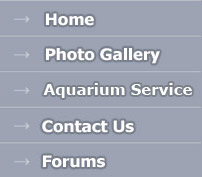


Product Search |
Products |
||||||||||||||||||||||||||||||||||||||||||
|
Water PhWhat is pH? We learned in school that water, or H2O, is composed of hydrogen and oxygen molecules. Neutral water is given a pH value of 7.0. It contains equal amounts of hydrogen ions (H+) and hydroxide ions (OH-). Dissolved chemicals and minerals change the balance of those ions from a perfectly neutral state. Increase the amount of hydrogen ions (H+), and the water becomes more acid ("low pH"). Increase the amount of hydroxide ions (OH-), and the water becomes more alkaline ("high pH"). The further these values rise or fall, the more acid or alkaline the water becomes.
What is Normal pH? Saltwater fish prefer an alkaline pH of 8.0 or above. Freshwater fish thrive at the neutral to acid end of the spectrum between 5.5 and 7.5. pH is not static, it changes over time - in fact it even changes over the course of a day. Typically it drops at night and rises during the day. pH changes as new fish are added or removed, as water is added or changed, and as the biological processes change in the tank. Preferred pH levels for a few common fish are: Angelfish 6.5 - 7.0 Clown Loach 6.0 - 6.5 Goldfish 7.0 - 7.5 Harlequin 6.0 - 6.5 Hachetfish 6.0 - 7.0 Neon Tetra 5.8 - 6.2 Plecostomus 5.0 - 7.0 Silver Dollar 6.0 - 7.0 Tiger Barb 6.0 - 6.5 Zebra Danio 6.5 - 7.0
Should I be concerned about pH? If you are planning a new aquarium it's wise to know the pH of your water source, so you know before hand if it is compatible. Some fish such as Discus, and certain cichlids, thrive in a very narrow ranges of pH which should be taken into consideration when setting up their aquarium. It is important to watch the pH levels when moving fish from one aquarium to another. Sudden changes in pH account for many fish losses that occur when fish are brought home from a pet shop. Neon tetras are particularly sensitive to sudden changes in pH, and can easily be shocked when moved. How often should I check the pH? Any time there is a fish illness or death, the pH should be tested. If the tank is treated with medication, the pH should be checked when treatment is begun, on the final day of treatment, and again a week later. It is also wise to test your water just before purchasing new fish. Check with the shop where you are purchasing the fish. It's important that the pH of water the fish is currently in is not significantly different than the pH of your water at home. Should I change my water pH? Doing frequent partial water changes, and vacuuming the gravel are the most important things you can do to keep water pH stable. |